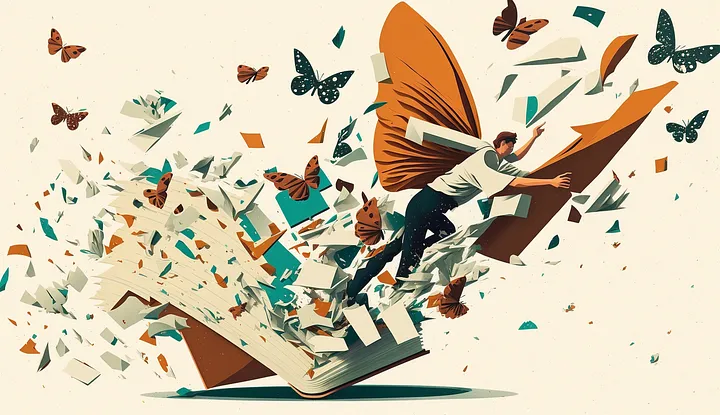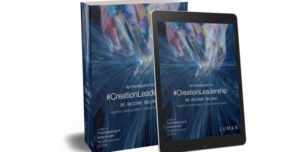Stress is a normal part of life, but when it becomes chronic or overwhelming, it can have negative effects on our physical and mental health. Understanding our stress triggers is important in managing stress levels and maintaining our overall health and well-being. Our stress reactions tend to fall into one of four types: freeze, flight, fight, or fawn. Overcoming our initial stress response and turning it into a conscious response is key to building resilience. Increasing awareness, responsibility, and ownership across our human operating system and choosing our identity sets us up for being more conscious in moments that require resilience.
Stress is a feature not a bug
Stress is a normal part of life, and our bodies are designed to respond to stressors in order to keep us safe and alert. However, when stress becomes chronic or overwhelming, it can have negative effects on both our physical and mental health.
The amygdala, a part of the brain responsible for processing emotions such as fear and anxiety, is activated in response to various stimuli that are perceived as potential threats or dangers. These triggers can vary widely from person to person and include things like physical pain, social rejection, or simply feeling overwhelmed by sensory input. Novelty as such causes stress. When we are encountering situations that seem to require more than we are currently capable of, we feel anxious.
“Anxiety is the dizziness of freedom,” Kierkegaard said. When we feel anxious, we have two options: we can either go down the self-deprecating path, were we are reminding ourselves how we are not good enough, don’t know enough, always made wrong choices and really shouldn’t even be here. Or we can ask ourselves: “who would I have to be in order not to feel anxious?” — and in that very moment become a little bit more of that person, using this opportunity of anxiety for our growth and expansion.
Stress Responses and how to overcome them
Key to being able to shift into that state is the ability to overcome our initial stress reaction and turn it into conscious response. Depending on our nature and nurture and our personal experiences, we tend to express our stress response in one of four key types that have evolved over time: freeze, flight, fight or fawn.
Freeze — Paralysis and Procrastination
Freeze is the oldest reaction to stress. It is the reptilian response, ceasing all motion in hope not to be discovered by the predator. It is camouflaging, covering and hiding. It expresses itself in procrastination, in ignoring that email in our inbox or that task that needs doing, or getting lost in analysis paralysis. It can feel like being a deer in headlights, frozen, unable to move.
And moving is exactly the best thing to do in that moment. By taking control of our body and consciously moving it, we get out of the freeze state, and signal to ourselves that we are okay, we can do something about the situation. Whether that is actual physical movement or taking a simple first step toward the task at hand, key is to get moving. Do something. Will yourself to movement and by that shifting your consciousness from a somatic overwhelm into rational control. (wiggle that big toe)
Flight — Escapism and numbing
Moving can also mean fleeing, or escaping the situation. Flight, the second reaction to stress is to use that movement to get away. This can be supportive at times, e.g. going for a walk when dealing with a difficult challenge, but can also easily become a distraction and avoidance of the issue at hand. Escaping can show up in many forms, from distracting oneself with social media, to going out and partying, or using mind altering substances to avoid facing our anxiety. It might show up as searching for a new job when things get tough, or as a constant busyness with irrelevant tasks.
Key here is to learn to sit with the difficult emotion. Emotions, as the word says, are here to put us in motion, but not away from the issue, rather beyond it. Remember how anxiety is the dizziness of freedom? We have to be able to face our emotion, dig into it, understand why the situation is triggering us and asking ourselves the right questions to get to the root cause of the trigger. That is where the treasure lies. Where we can gain insight into our self or others and overcome not just our acute stress response, but our limitations to our own growth in general.
Fight — Blaming others or oneself
Another way in which we avoid that growth is to look for blame in others. Fight, our third stress reaction shows up in pointing the finger at ourselves or others as the source of the issue. Our brain is trained to make up explanations. When we feel bad, it must be someone’s fault. Depending on our conditioning, we will seek that fault in ourselves or others. Either we go down that path of self-deprecation, or we begin to accuse others of causing our misery. It can show up in self-harming behaviors or in gossiping about others.
When pointing our finger at others, three fingers are pointing back. Key to overcoming the blame game is to step down the path of awareness, responsibility and ownership. First, we get to expand our awareness. There are never only one or two sides to a situation. What other perspectives can we take into consideration in this situation? How are we aware of the issue in ourselves? And how can we take responsibility for whatever part we may have had in causing the current situation? Be aware that responsible does not mean guilty. Instead of a victim perspective of guilt and shame, take the perspective of a leader who is response-able, capable and self-directed. As you do so, you step into ownership over your contribution to the moment and your ability to respond to it, taking back your locus of control.
Fawn — Going limp and waiting for it to be over
Being in ownership then frees us to chose who we want to be in the situation, instead of falling into the trap of the fourth stress reaction: to fawn. Also sometimes called faint or friend, this fourth stage is about surrendering to the moment, and giving up participation. It is going flaccid or throwing your arms up in the air, checking out and just hoping for the situation to be over soon. In today’s work world, this is often reflected in quiet quitting. Showing up for the minimum work, but avoiding any real emotional engagement. It is the disassociated attitude of “let them do to me whatever they will”.
Here in particular it is key to remind oneself of the identity one aspires to. Who do you want to have been one day when you die? Who would you want to be next year? Who would you want to be in a situation like this stressful one? In that dizziness of freedom, can you see the light of your own aspiration? Having a conscious anchor or mantra to ground your current aspirational identity will support you in bringing yourself back to a place of empowerment. Step out of victim mode and take that extra step to cross that threshold that makes you a leader. The original meaning of the word leader is indeed about crossing a threshold and taking that first step. Then you can get back into action and take those actions that will garner the desired outcomes in whatever situation you might be in. Choose, who you want to be, and relate to others consciously from that place, respond rather than react to the situation.
How to create resilience
Resilience requires both situational and deliberate practice. First and foremost it requires enough self-awareness to notice when one is getting triggered and shifting into a stress behavior. In that moment our situational practice becomes important, getting into movement, digging into the emotion to find its source, practicing awareness, responsibility and ownership, and ultimately choosing our identity, who we want to be in the moment.
To be able to do that requires practice.
Engaging in deliberate practice of movement, e.g. through keeping your body healthy ensuring flexibility, strength and endurance will also allow you to be more flexible emotionally, and have the strength to endure unpleasant moments.
To provide you with the tools to dig into your emotions, it is beneficial to practice a set point state, e.g. through gratitude rituals. This way, you have an emotional baseline for how you would like to feel, and are quicker to notice when you don’t. Reviewing your emotional landscape at the end of the day can also support you in becoming more aware of your triggers and default emotional patterns. Doing so will then provide you with more awareness for when things come up.
Increasing awareness, responsibility and ownership come through applying these three key steps across our human operating system regularly. Checking in with your physical, emotional, or mental states, reviewing your relationships and relationship patterns, and creating space for your own voice and vision, the genius that wants to emerge through you can all aid you in being more conscious in moments that require resilience. Learning to take responsibility and practicing self-regulation and deliberate habit creation are your path to being in ownership of your state.
Similarly, regularly reviewing who you would like to be, and more so who you would like to become, will give you an identity baseline that you can draw from in moments that throw you off kilter. Having a strong and clear aspiration as to your identity provides a north star, a guide and sometimes simply a rope to pull yourself out of the mud.
It’s a journey — be kind
Resilience is a practice. It is not something you can just “have”. There will be moments, when you do better at it, and moments that will be more challenging.
Be kind to yourself. Being human isn’t easy. There are plenty of challenges from our physical health to our emotional well being, from an overload of information to issues in our relationships.
In many ways resilience comes from youth or experience: before you knew better and after you know better than to let things around you influence your state of being.
This is your life. These are your moments. You cannot control events outside of yourself, but you can control how you respond to them in any given moment and what matters to you. Practice resilience and make your moments — and your life — matter.





